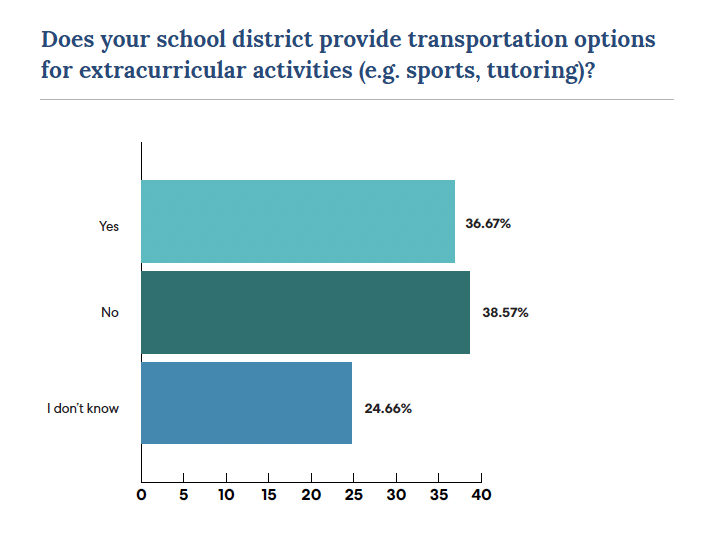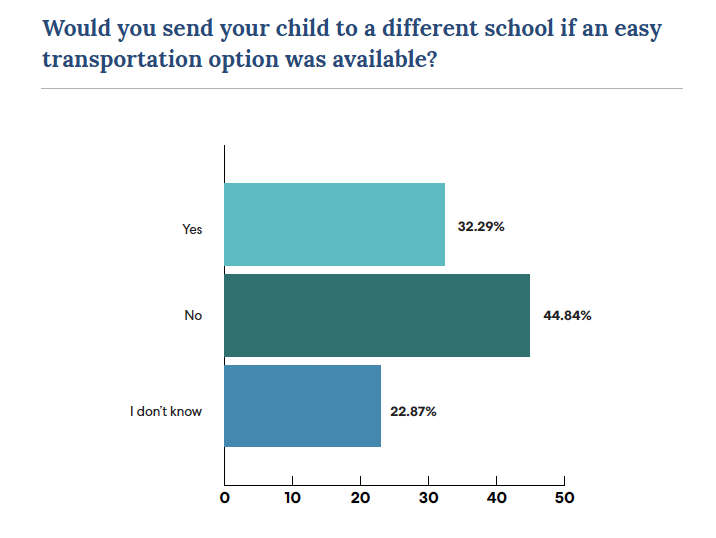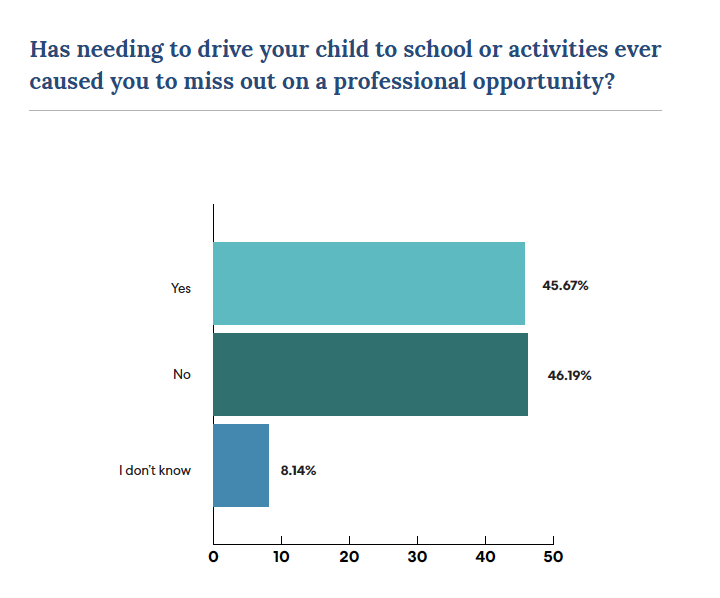Parents weigh in on school transportation today

For the past few years, HopSkipDrive has surveyed student transportation stakeholders nationwide about the state of school transportation. As part of our survey this year, we also asked for input and opinions from parents and others who act as caregivers for children (such as grandparents or foster parents) about their experiences related to school transportation.
As a result, we’ve been able to highlight how the way kids get to and from school each day impacts the lives, careers and stress levels of parents and caregivers across the United States. This article will zero in on some of the most eye-opening insights revealed by parents.
If transportation wasn't an issue, parents would enroll their children in more extracurricular activities
According to this year’s survey respondents, two-thirds of parents and caregivers would place their children in additional extracurricular activities — including tutoring — if the school district offered transportation.

About the same number of respondents reported they wish their school school district provided more transportation options.
This is likely because the stress of managing transportation logistics for families puts immense pressure on the daily schedule of parents. In fact, sorting out transportation was cited as the top stressor for parents at the start of a new school year.
Three out of 10 parents said they thought about their child’s school transportation needs daily. Moreover, nearly one-third of respondents said they would consider sending their child to a different school if transportation was provided.

What does this all mean? Based on transportation challenges, parents and caregivers are often forced to make tough decisions about what school to send their children to — and what activities to enroll them in.
These findings once again reveal that transportation is a major roadblock to educational equity. After all, the families with the most resources can often find a way to make sure their children can participate in extracurricular activities, take advantage of tutoring and other beneficial academic opportunities, and attend the school that is the best fit for them. It’s the families that have fewer resources — including limited access to reliable transportation for their kids — that can be forced to make sacrifices.
Parents report that managing family transportation needs affects their lives —and careers
It’s not just students who have something to lose when transportation to and from school and extracurricular activities isn’t readily available. Having to manage family transportation needs on a day-to-day basis creates challenges for parents that can, and all too often do, negatively impact their careers.
In fact, many parents revealed that constrained access to transportation has caused them to miss out on a professional opportunity because they needed to drive a child to school or an after-school activity.

When we asked survey respondents what would happen if their child’s current school transportation solution became unavailable, the answers were eye-opening. Parents and caregivers reported they would need to change their schedule, ask a friend or relative to help out, call a taxi, use public transit — or consider changing schools.
An anonymous survey respondent, a mother, reported that she’d become a stay-at-home mom because of her child’s school needs.
Supplemental transportation helps parents get their kids where they need to go
With this year's parent survey, we also had the privilege of hearing from parents whose children have been able to secure supplemental transportation to their schools of origin. One respondent, Krista Cheline Beall, had this to say about the impact of reliable transportation on her and her children’s lives:
“Because of the McKinney-Vento Act, my children are able to attend their school of origin. Without this kind of transportation, the kids would have to attend schools that I am not comfortable with. The days are longer, but it’s worth it.”
Another guardian, a grandparent named Margery Gomez, shared a story about her grandson, who’s been able to remain at his school of origin because of supplemental transportation.
“My grandson came to live with me after his mother died, and I live in a completely different school district. It would have been like him taking a step backward to switch from his school district to mine. He would have lost too much. I’m glad the school districts were able to pull [transportation] together for us. It was such a blessing, and he’s now graduated.”
To learn more about how student transportation impacts families from the perspective of parents and caregivers, read the complete 2023 State of School Transportation Report here.


